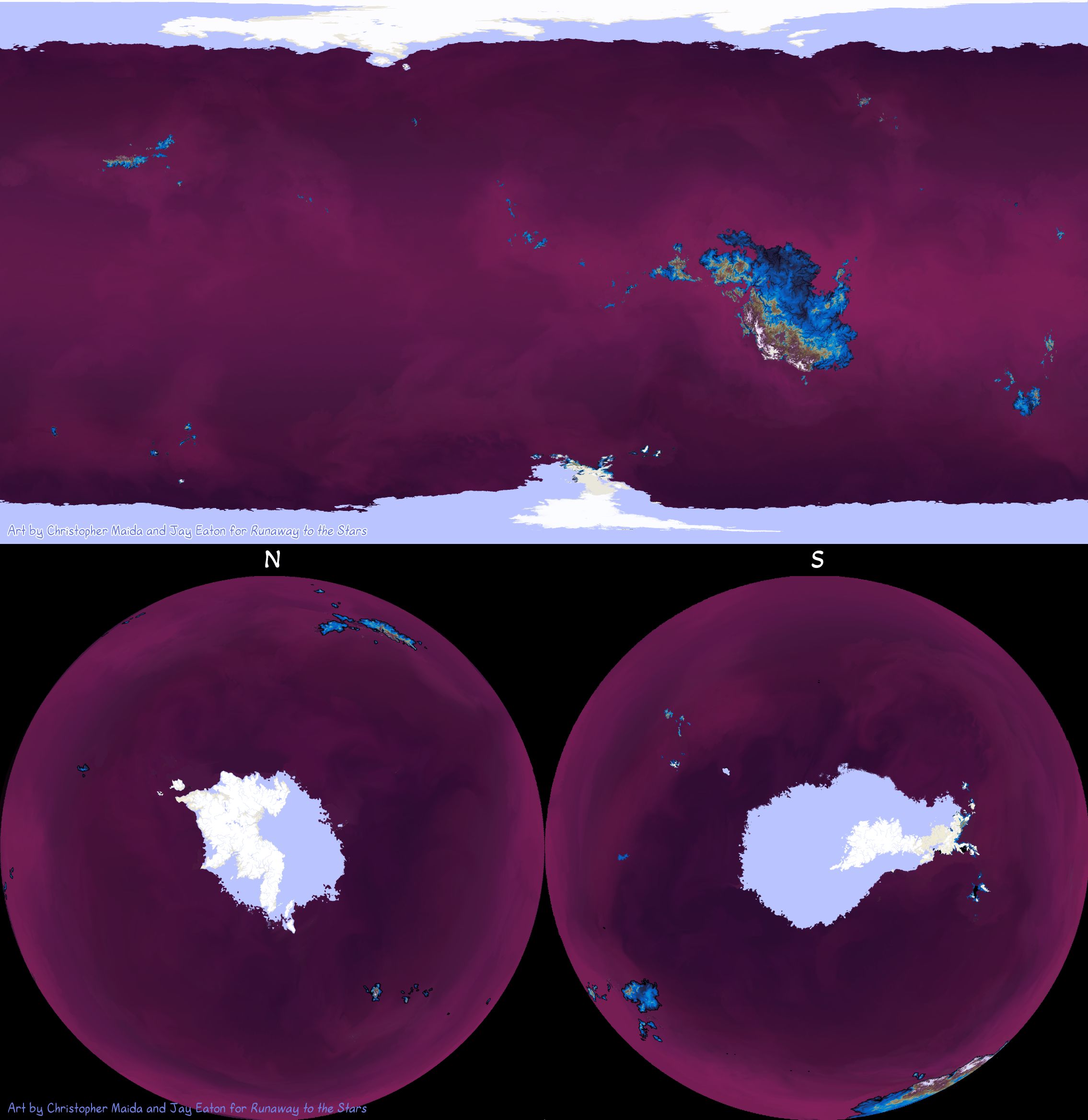
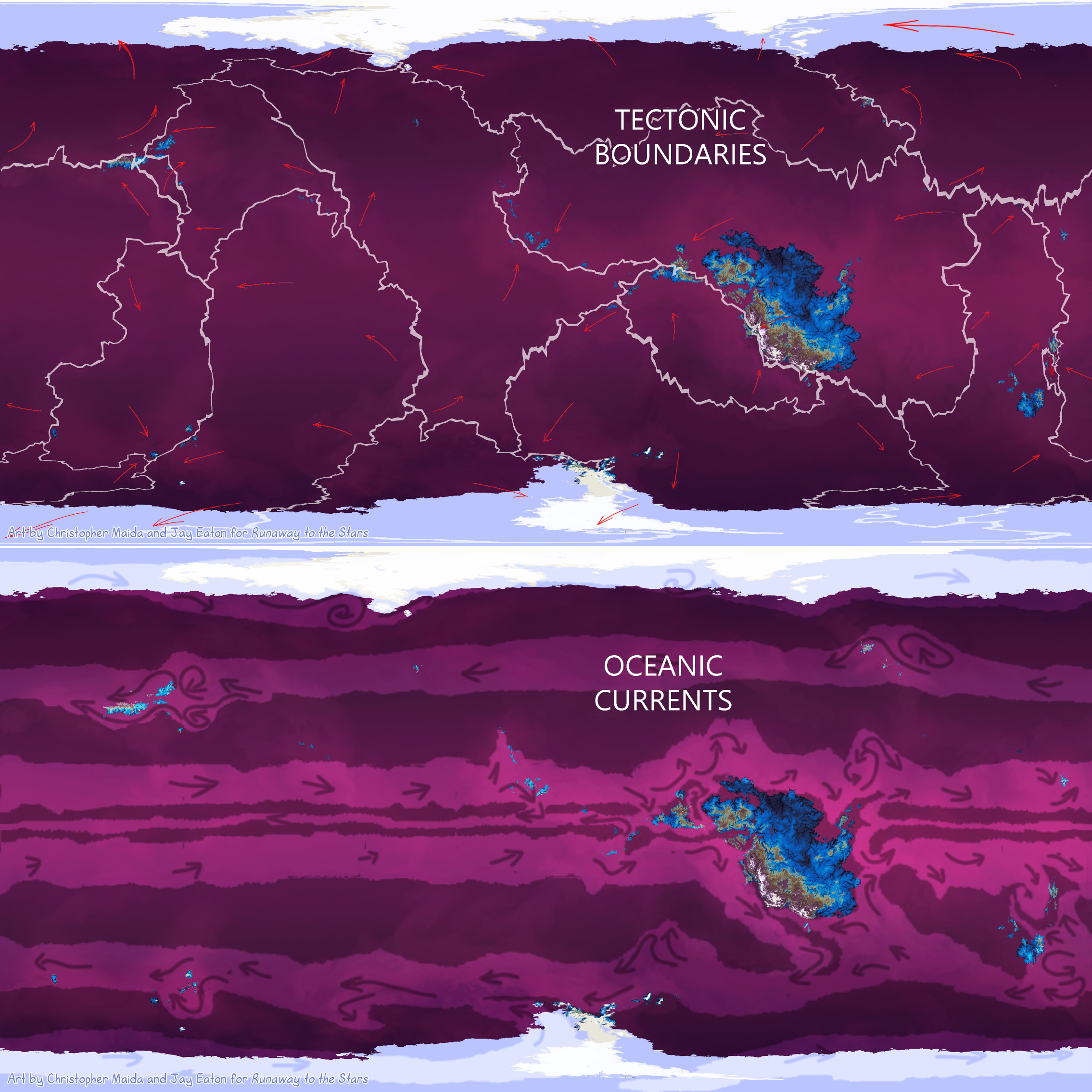
Over 90% ocean and blasted by the light of an intense star, the avian homeplanet is prone to hot, humid weather and enormous monsoon storms. In spite of this, the planet’s very slight axial tilt gives its poles a coating of year-round sea ice, whose sifting, dune-like surface plays host to a strange variety of slow growing plants and hardy animals. On solid land, the dominant photosynthetic life is a clade of “plants” ranging from dark blue to cerulean, and a clade of sessile tube-dwelling “landworms” with black flesh and frond-like appendages. Their dark colors selectively absorb and reflect the harsh, high-UV light of the sun.
The crust of the planet also has an unusually large amount of the element cobalt. It comprises over 5% of the planet’s crust, comparable to iron on Earth. Cobalt compounds generally have a much higher solubility in water than iron compounds, though, and the avian oceans are stained a purplish red from huge amounts of dissolved cobalt nitrate, cobalt chloride, and cobalt carbonate. Mineral veins of cobalt compounds can be found commonly in the planet’s rocks, forming streaks of red, blue, black, green, and sometimes yellow depending on composition. Sand and soil are sometimes stained purple and blue by cobalt salts, as well.
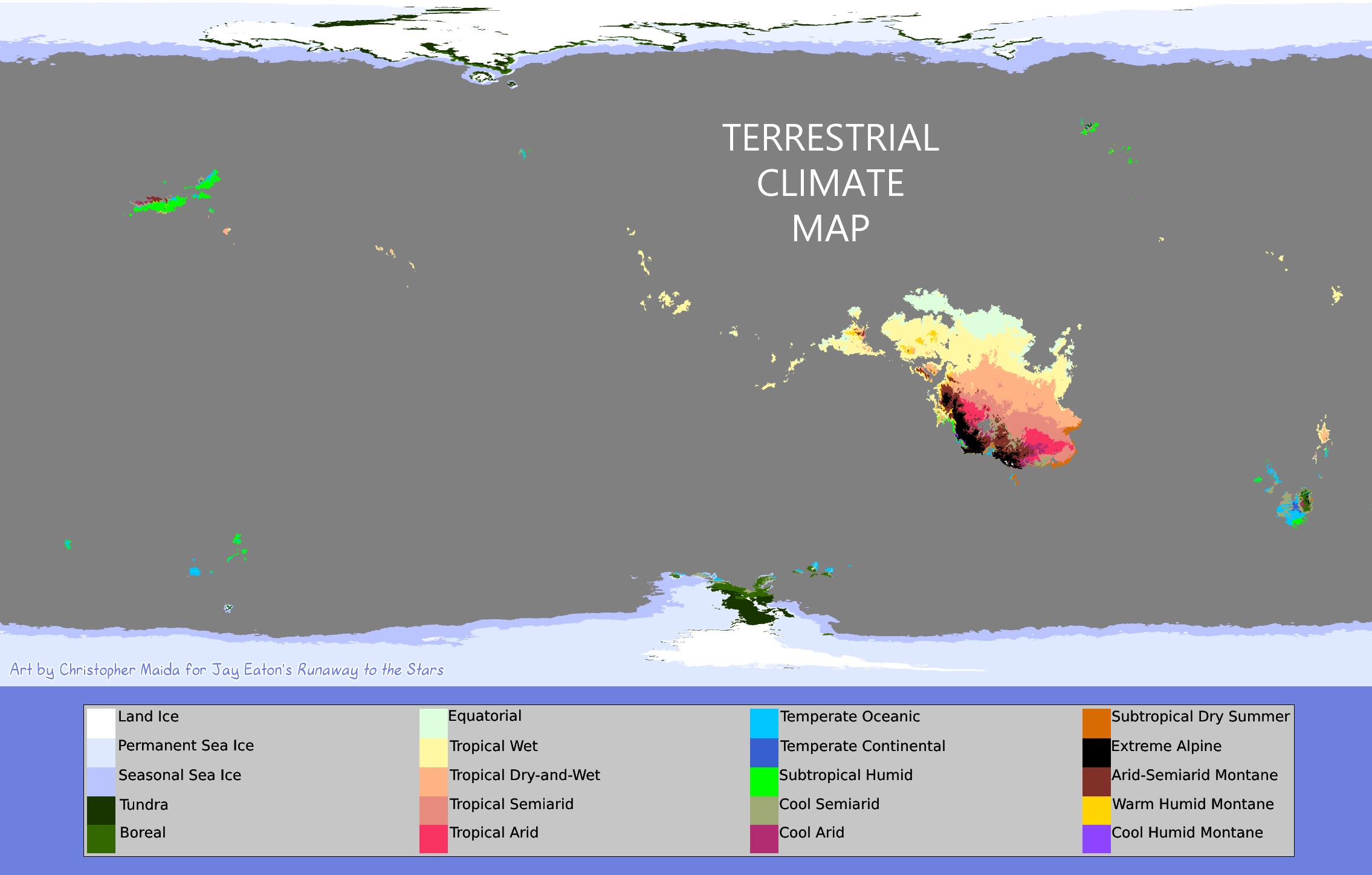
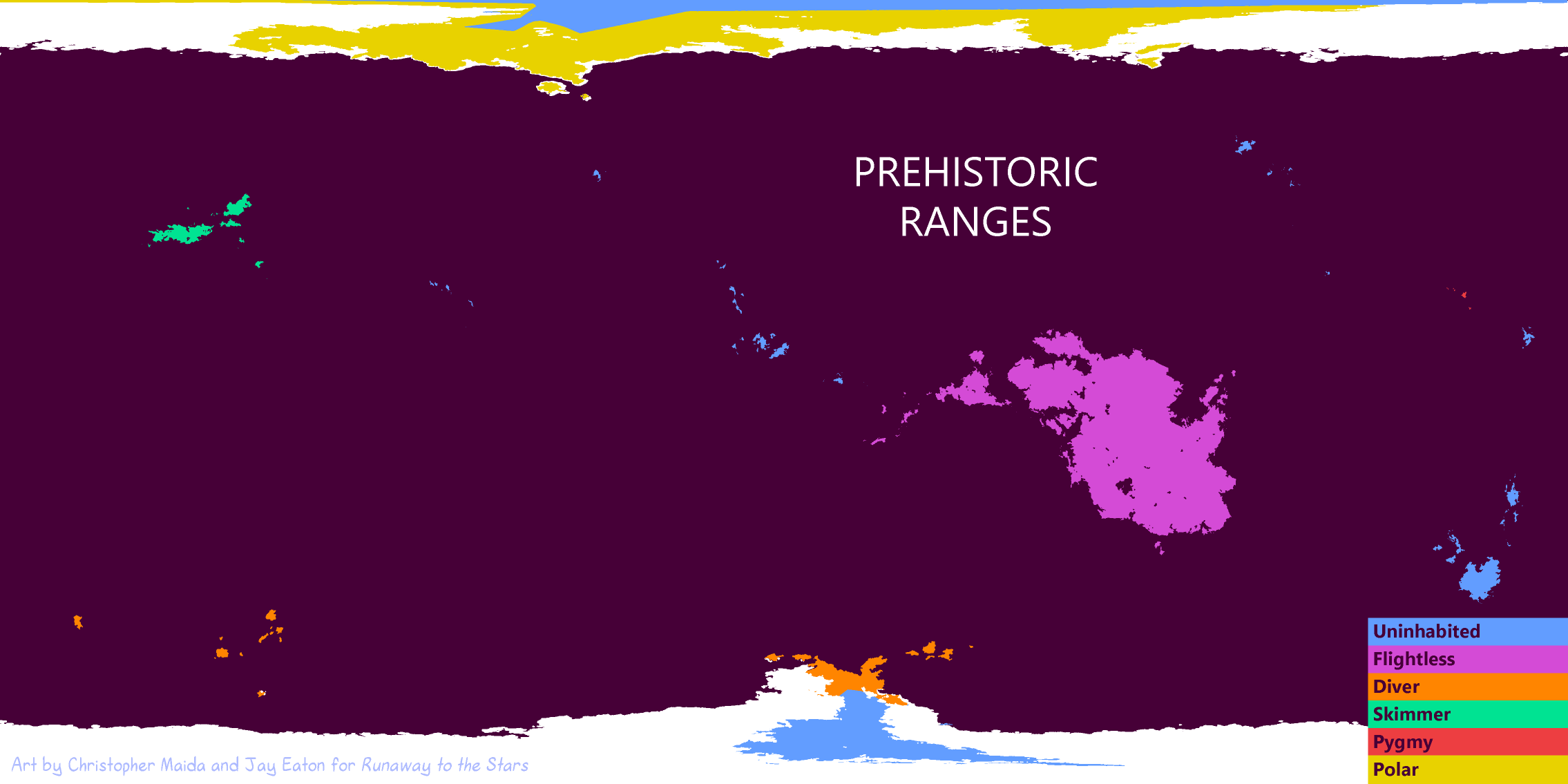
The clade of avians has a difficult evolutionary history to track, given the limited amount of dry land and intense development over the past thousand years. The current theory is that a flying sophont ancestor originated on the planet’s largest landmass, an Australia-sized continent, and radiated outwards to evolve into the 5 extant species of avians.
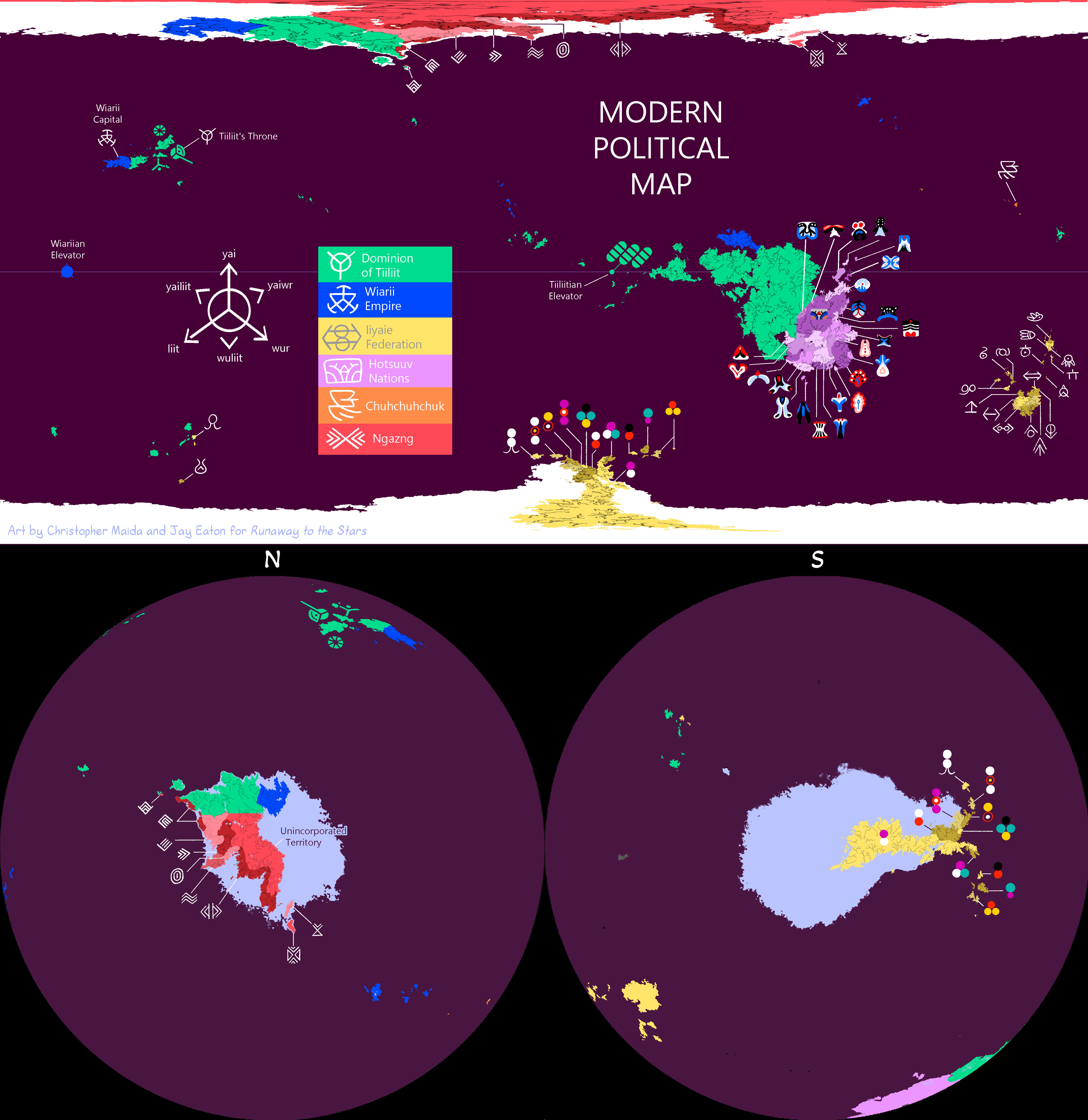
In modern history, avians have often run into space issues developing their societies, and metal as a resource has been at the center of some particularly bitter wars. Most land on the homeplanet is currently colonized by the Dominion of Tiiliit, and now in the space age, imported metal and helium is being used to add new land in the form of artificial islands and floating cities.
Avians tend to use simple, writable icons to represent their nations. Though traditionally, the Hotsuuv nations use local cultivated varieties of seal fruit as icons, and the mineral rich south pole uses dots of pigment.
Uninterrupted by large landmasses and driven by the heat of a higher energy star than our sun, huge hurricanes and storm systems often sweep through the planet's atmosphere. Classic architecture often dealt with these frequent heavy winds by being relatively low to the ground, tapering from the ground up, having a rounded shape, or having part or all of the structure underground.
As their population grew on planet, space-saving in cities became a major issue for avians. Modern architecture deals with the population density issue with advanced and dynamic shapes that flex in the winds, often reinforced with metal mined from undersea and off-world sources. Cities often grow outwards, into the ocean as well-- either on stilts and pontoons like those found on oil rigs, or on fill dredged up from elsewhere on the ocean floor.
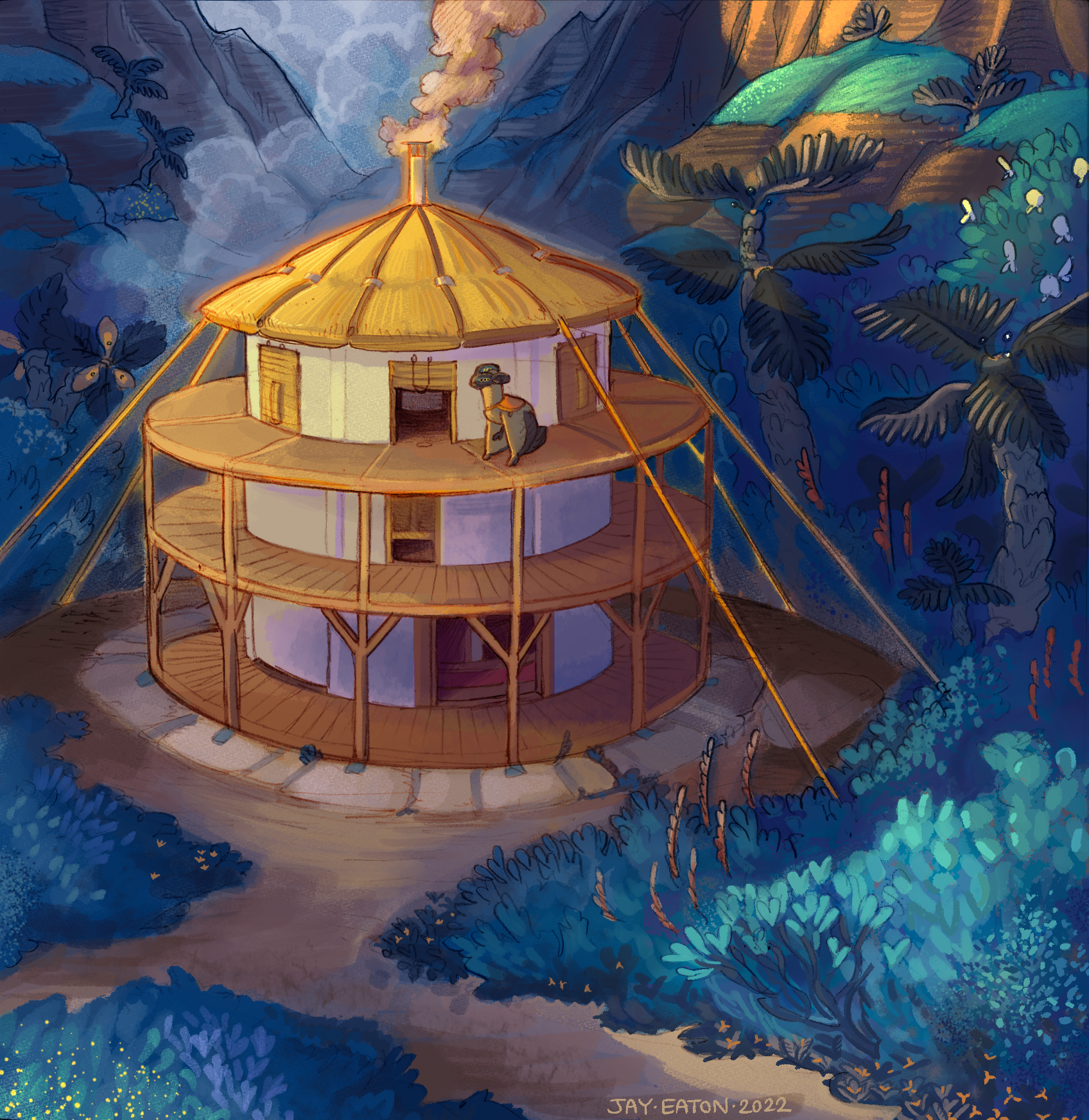
Above is a traditional-style pygmy avian dwelling, which is about 3.3 meters tall.
They’re constructed from woody and fibrous plant materials, a plaster of crushed worm tree shells, and as little rare metal as possible. The surface of the avian homeplanet is over 90% ocean and most settlements are on scattered islands, so extensive mining for metal ore or even stone is tricky. The round shape protects against strong typhoon winds, and the upper balcony is left open for ease of takeoff and landing. Flight is not required to access any part of the building, though.
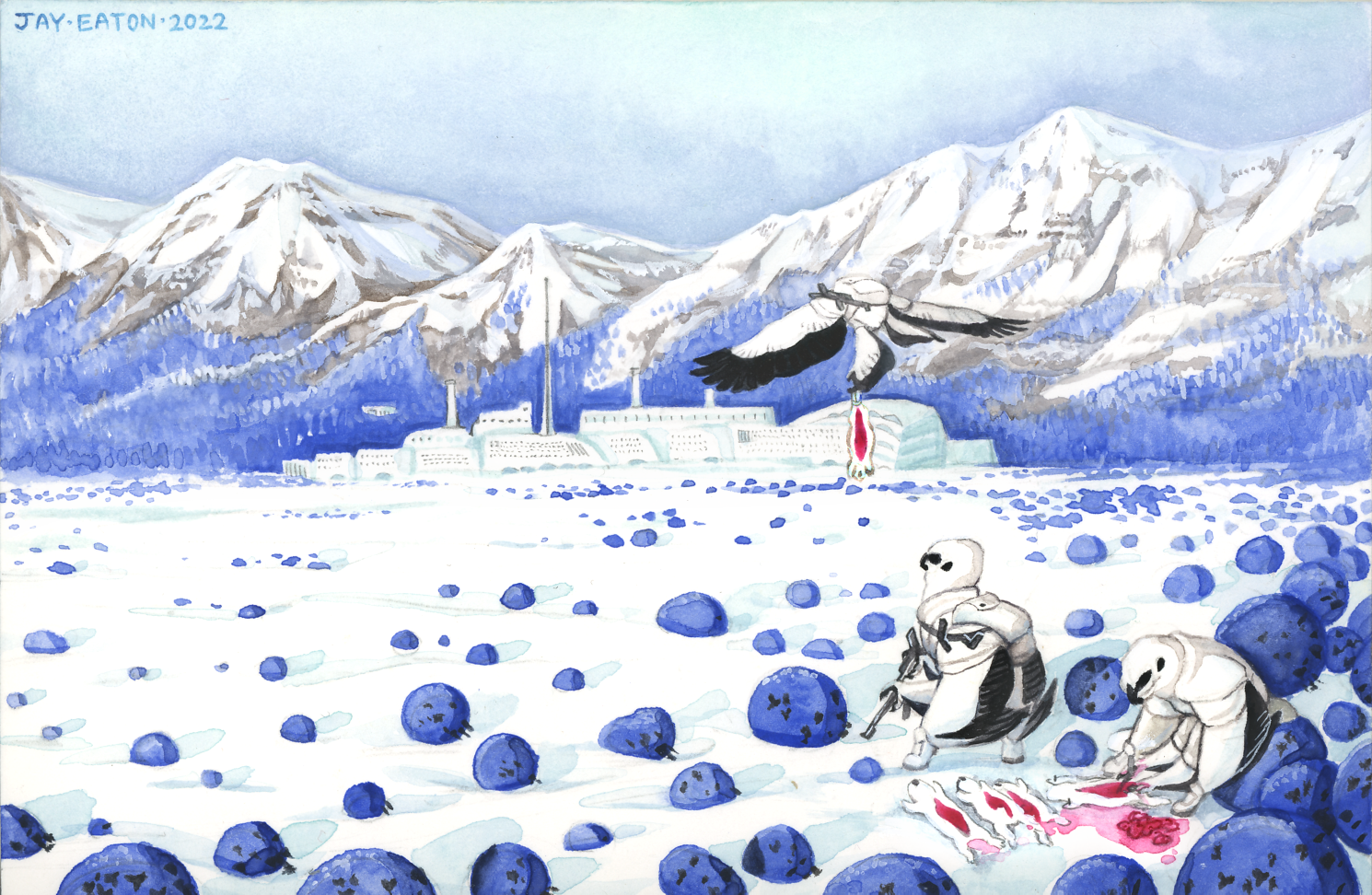
The poles of the avian homeplanet both have permanent sea ice fields, which are difficult for life to colonize for the same reason sand dunes are. The surface constantly shifts (although much slower than a dune) as it’s shaped by wind, currents, melting, and precipitation.
In the North pole, the dominant ecosystem on the ice is globe fields, which are full of conglomerate balls of moss and frost tolerant worm plants. They very slowly roll across the ice, being pushed uphill by the worms into sunlight as their thermal mass slowly melts whatever ice they sit upon.
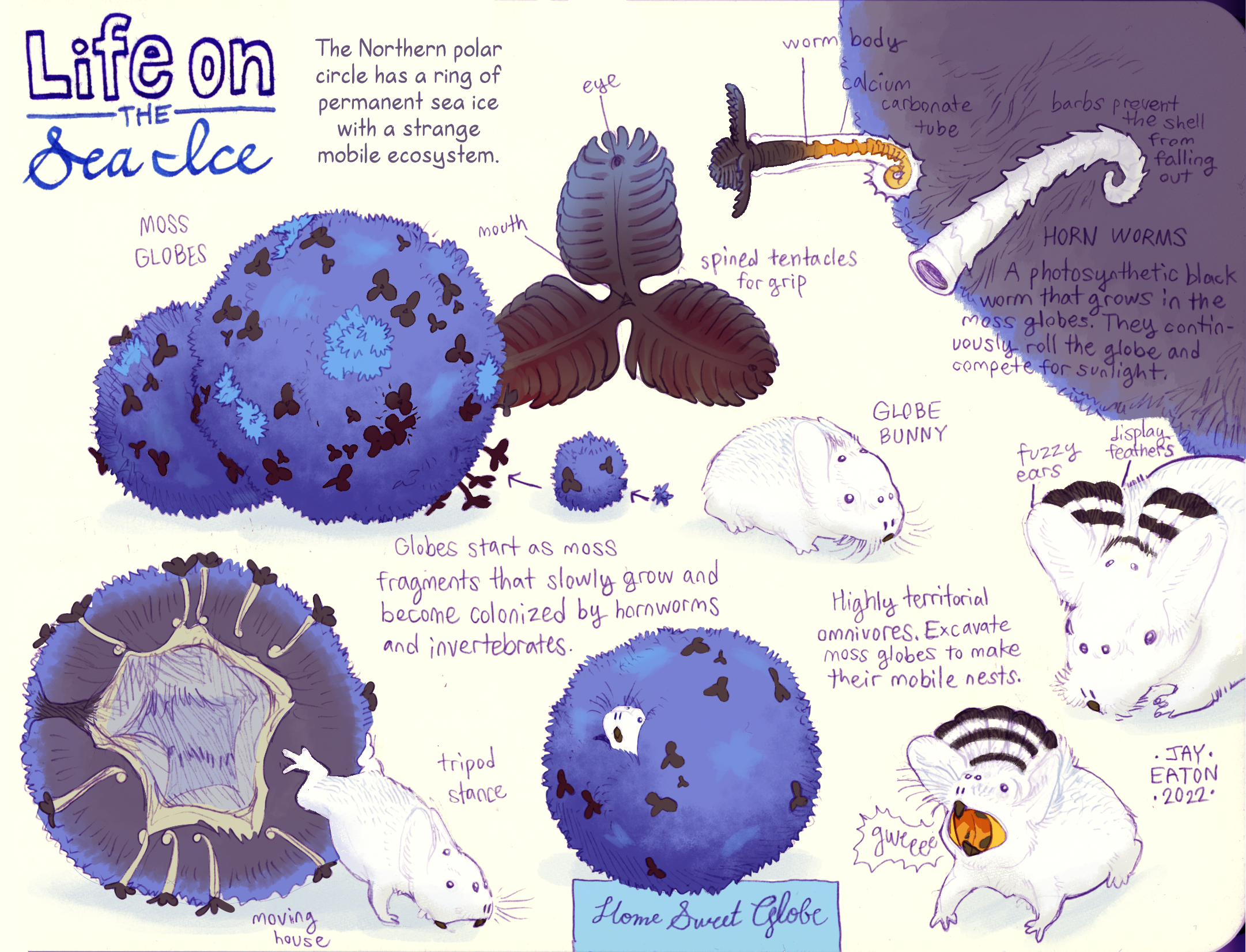
All of the moss globes are host to a suite of small cold tolerant invertebrates, but a small fraction are also nests for globe bunnies. These small endotherms hollow out the inside of mossball and pack it with insulation. They feed voraciously on invertebrates and other mossballs, though they will also trim the “lawn” surrounding their house, to keep it at a manageable size and roundness for rolling about.
Polar avians find the globe bunnies tasty. The watercolor painting here features one of the larger coastal cities on the North pole landmass. It is essentially one large interconnected building, in classic polar avian style.